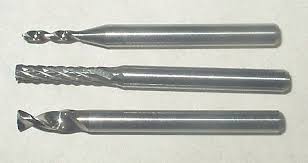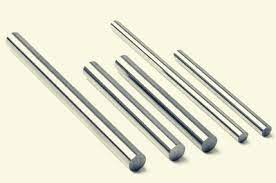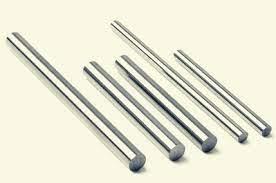Welcome to our blog post on the fascinating world of tungsten carbide production! Have you ever wondered how this extraordinary material, known for its exceptional hardness and durability, is created? Well, prepare yourself for an enlightening journey as we delve into the intricate process behind crafting tungsten carbide. From mining to mixing, sintering to shaping – get ready to uncover the secrets behind this remarkable alloy that has revolutionized industries worldwide. Join us as we unravel the mysteries and unveil a world where science meets ingenuity in order to produce one of the strongest materials known to man.
Introduction to Tungsten Carbide
Tungsten carbide is a chemical compound containing equal parts of tungsten and carbon atoms. In its most basic form, tungsten carbide is a fine gray powder, but it can be pressed and formed into shapes through a process called sintering for use in industrial machinery, cutting tools, abrasives, armor-piercing rounds, other tools and instruments, and jewelry.
Tungsten has the highest melting point of any metal, at 3410 degrees Celsius. Carbon has a much lower melting point of 3800 degrees Celsius. When combined, tungsten carbide has a melting point somewhere between 1500-2000 degrees Celsius, making it ideal for many industrial uses.
The process of production begins with pulverizing tungsten ore into a fine powder using crushers and rotary mills. This powder is then fed into a furnace where it is heated to around 2200 degrees Celsius in the presence of carbon. The resulting product is a black porous mass known as “green carbody” which is around 80% tungsten carbide and 20% cobalt.
This green carbody is then placed into another furnace where it is heated to even higher temperatures (between 2600-2800 degrees Celsius) in order to remove the cobalt binder material. What remains is pure tungsten carbide -- hard, strong and dense -- ready for use in various industrial applications.

Properties of Tungsten Carbide
Tungsten carbide is a chemical compound containing equal parts of tungsten and carbon atoms. In its most basic form, it is a fine gray powder, but it can be pressed and formed into shapes for use in industrial machinery, cutting tools, abrasives, armor-piercing rounds, other tools and instruments, and jewelry.
Tungsten carbide is extremely hard, ranking 7 on the Mohs scale of hardness (between silicon carbide at 9 and diamond at 10). It also has high density (approximately half that of iron or steel), high melting point (approximately 2800°C), good wear resistance, good strength, good shock resistance, and low thermal expansion. These properties make tungsten carbide an ideal material for many industrial applications.
Manufacturing Process of Tungsten Carbide
Tungsten carbide is produced by a chemical reaction between tungsten metal and carbon. The process takes place at extremely high temperatures, typically around 2,700 degrees Celsius. In order to achieve the necessary conditions, the reactants are placed in a furnace with a vacuum pump that removes any oxygen from the reaction chamber.
The tungsten and carbon react to form tungsten carbide, which is then cooled and ground into a powder. This powder can be used as-is or pressed into pellets or rods for use in various industrial applications.

Quality Control & Finishing Processes for Tungsten Carbide
Once the tungsten carbide has been produced, it must undergo a series of quality control and finishing processes to ensure that it meets the highest standards. These processes include:
1. Quality Control: All tungsten carbide products are subject to strict quality control measures. This ensures that they meet the highest standards of quality and performance.
2. Finishing Processes: After the tungsten carbide has passed quality control, it undergoes a series of finishing processes. These processes give the carbide its final shape, size, and surface finish.
Applications of Tungsten Carbide
Tungsten carbide is a versatile material that can be used in a variety of applications. Some of the most common applications for tungsten carbide include:
- Cutting tools: Tungsten carbide is often used to create cutting tools for machining operations. The material is extremely hard and resistant to wear, making it ideal for this application.
- Mining: Tungsten carbide is also used in mining operations. The material can be used to create cutting tools and wear-resistant parts for equipment.
- Construction: Tungsten carbide is often used in the construction industry. The material can be used to create cutting tools, drill bits, and other wear-resistant parts.
- Military: Tungsten carbide is also used by the military. The material can be used to create armor-piercing rounds and other projectiles.

Advantages and Disadvantages of using Tungsten Carbide
https://www.diatooling.com/Many-uses-of-tungsten-carbide.html is a very strong and hard material that is often used in industrial applications. It has a number of advantages over other materials, but there are also some disadvantages that should be considered.
Advantages:
-Tungsten carbide is one of the strongest and hardest materials available, making it ideal for many industrial applications.
-It is highly resistant to wear and tear, making it ideal for products that will see heavy use.
-It has a very low coefficient of friction, meaning it can reduce wear on moving parts.
-It is non-magnetic and has excellent electrical conductivity.
Disadvantages:
-Tungsten carbide is a very brittle material, meaning it can break easily if not used properly.
-It is also quite expensive, meaning it may not be suitable for all applications.
Conclusion
Tungsten carbide is a versatile and hard material that is used in many different industries. The production process of tungsten carbide involves several steps, starting with the selection of raw materials and ending with a sintering stage where the individual particles are joined together to form one solid piece. This process has been refined over time to create high-quality products for industrial use. With its wide variety of applications, it is clear why tungsten carbide has become such an important part of modern manufacturing processes today.
Shanghai Diatooling is a highly professional and experienced carbide preforms manufacturer and provider. With the superior technological background, outstanding R&D capability, and the concept of insisting on strict quality, we can offer excellent service and large capacity manufacture.And with our vast experience in tungsten carbide, every customer is sure to get the right solution for their cutting tools.Welcome to inquiry if you need to know more about Tungsten carbide details or order wholesale.%[email protected]
Related News:Many uses of tungsten carbide, Application and advantages of tungsten carbide
